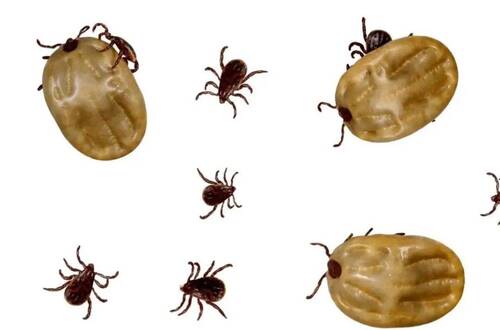Ticks are parasites that often attach to mammals, birds, and reptiles to suck blood. Not only do they cause harm to their hosts, they can also spread a variety of diseases, such as Lyme disease and cat scratch fever. Although ticks play an important role in the ecosystem, their excessive numbers can have a negative impact on human and animal health. Therefore, it is important to understand the natural enemies of ticks and their impact on organisms.
In nature, several animals feed on ticks. Here are some of the main natural enemies of ticks:
Birds: Many birds, such as wild pigeons, robins, and sparrows, feed on ticks. They look for ticks in grass and branches while foraging, thereby reducing the number of ticks.
Lizards: Some lizards, such as green iguanas and chameleons, also prey on ticks. The activities of these reptiles help control tick populations.
Small mammals: Some small mammals, such as mice and rabbits, can catch ticks in their fur and remove them through regular cleaning activities.
Parasites: Some parasites, such as small nematodes and fungi, also pose a threat to ticks. These parasites live inside or outside the tick, killing the tick.

The impact of ticks on humans is mainly reflected in the following aspects:
Disease transmission: Ticks are carriers of many infectious diseases, such as Lyme disease, Rocky Mountain spotted fever and Babesiosis. These diseases can cause serious health problems and even endanger life.
Allergic reactions: Some people have allergic reactions to tick saliva, which may cause skin itching, redness and swelling.
Psychological effects: After being bitten by ticks, many people will feel panic and anxiety, worrying about possible diseases, affecting their mental health.
Ticks not only pose a threat to humans, but also have an impact on the health of animals:
Disease transmission: Ticks can transmit a variety of animal diseases, such as canine Lyme disease and canine babesiosis. These diseases can cause animals to have symptoms such as weakness and loss of appetite.
Anemia: A large number of tick bites can cause animals to lose blood, which can cause anemia and affect their overall health.
Skin diseases: Tick bites can cause skin infections and inflammations, causing pain and discomfort to animals.
Ticks usually live in the following environments: Forests and bushes: Especially under trees and bushes, which provide shelter and moisture. Grasslands and fields: Tall grass and bushes are common habitats for ticks. Wet environments: Ticks prefer moist places and avoid direct sunlight.
Ticks mainly appear in warm and humid seasons, usually from spring to fall (approximately March to November), and are most active in summer.

To reduce the number of ticks and their impact on humans and animals, you can take the following measures:
Environmental management: Regularly trim grass and bushes, keep the yard clean, and reduce tick habitats.
Regular inspection: Check your pets and family members for ticks regularly and remove them immediately if found.
Use insect repellent: Use special insect repellent on your pets to prevent tick bites.
Education and publicity: Raise public awareness of ticks and the diseases they spread, and enhance awareness of prevention.
Ticks play a certain role in the ecosystem, but their threat to human and animal health cannot be ignored. Understanding the natural enemies of ticks, their impact on humans and animals, and taking effective control measures can effectively reduce the number of ticks and protect our health.
Use tweezers or a special tick removal tool to grab the tick close to the skin and gently pull it upwards. Make sure to remove the tick as completely as possible without leaving the mouthparts.
Wash the bite site thoroughly with soap and water, then disinfect it with alcohol or iodine.
Pay attention to whether there is redness, swelling, itching or other discomfort in the bite site and the whole body. If you have symptoms such as fever, headache, fatigue or rash, seek medical attention immediately.
Write down the time and place of the tick bite so that your doctor can assess the possible risk of infection.
If you have any concerns about tick bites, especially if you have been in an area with a high incidence of ticks, it is best to consult a doctor and get tested and treated if necessary.
In the future, try to wear long-sleeved clothing, use insect repellent, and check yourself and your pets regularly to reduce the risk of tick bites.
animal tags: Ticks
We created this article in conjunction with AI technology, then made sure it was fact-checked and edited by a Animals Top editor.